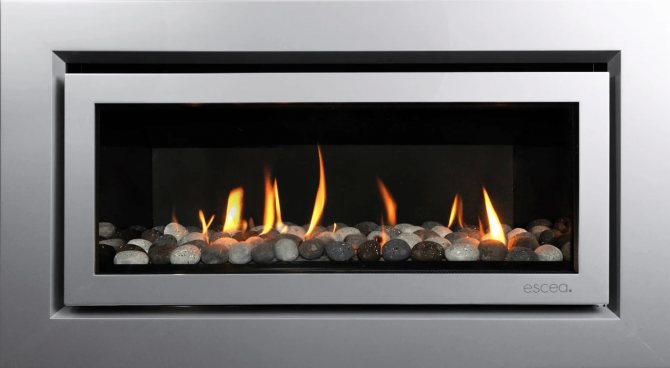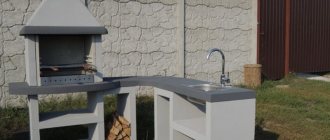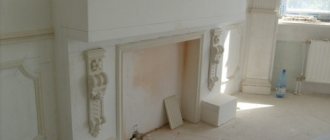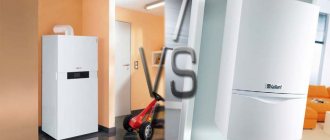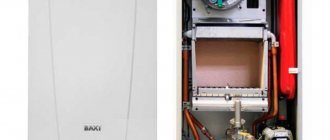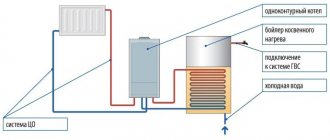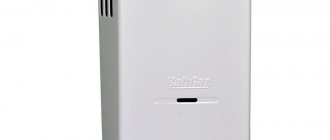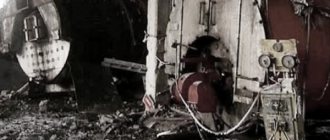The fireplace has long ceased to serve solely as a means of heating. Actually, in cold Russia he never was. Despite the fact that the practical importance of an open hearth in a modern home is minimized, the primitive craving for fire forces many of us to install fireplaces in our comfortable houses and apartments. The operation of a traditional wood-burning fireplace, unfortunately, is troublesome; the possibility of installation in urban housing is very limited. For those who want to admire a real flame, but are not ready to remove the ash from the firebox and clean the chimney, a gas fireplace can be an acceptable alternative.
Almost a real fireplace for practical people
Those who have a real wood-burning fireplace at home know how much hassle it can be. Bring the firewood, chop it, stack it, bring it into the house. Place it in the firebox, light the fireplace, warm up the chimney, watch the draft, add some firewood so it doesn’t go out. I sat and warmed myself in front of the fire in the evening - the next day, be so kind as to remove the ashes, while it is advisable to manage not to spill it on the floor and not to stain everything around with soot. And an accidental draft can instantly spread the lightest ash throughout the house. Don’t forget to wash the glass door of soot once every month or two, which is very difficult to do if you used coniferous wood for the firebox.
Yes, the gas flame is not as romantic and lively as from birch logs. There is no characteristic aroma or crackling of burning wood. Even the appearance of fire from gas burners is not so picturesque; it has a more orderly appearance and a “kitchen” bluish tint. However, this is not a surrogate electric fireplace or bio-alcohol fireplace. A gas fireplace produces a powerful, “almost real” flame, the warmth of which can warm not only the mortal body, but also the immortal soul. In this case, no maintenance of the heating device is required. Just wipe off the dust sometimes.
The lower combustion temperature of gas compared to wood and the absence of soot removes some of the restrictions on the size and proportions of the firebox
Using a fireplace is no more difficult than using a good stove. No matches are needed; ignition is usually automatic. Gas monitoring monitors safety. The adjustment of the burning intensity is smooth, at the minimum mode the low fire is like smoldering coals, at the maximum the bright flames give a noticeable heat. “Advanced” models, in addition to manual control, are equipped with complex automation, which turns them into a perfect high-tech device and significantly increases the cost.
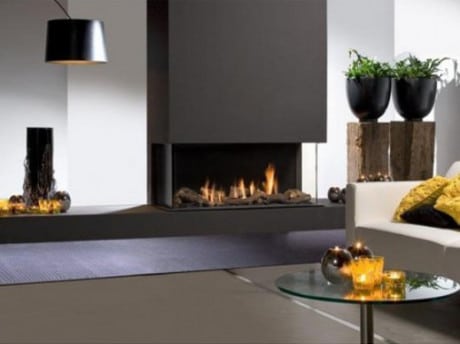
Glass walls will never smoke, a steel frame is not necessary, a gas fireplace can be transparent, like an aquarium
Obtaining permission to install a gas fireplace in a city apartment, subject to certain conditions, which are discussed below, is much easier than for a wood fireplace (in the central regions of large cities, gas is the only possible option), gas combustion products pollute the air to a minimal extent and environmentalists do not object .
Furniture and interior items
77 votes
+
Vote for!
—
Vote against!
Installing a gas fireplace is an excellent option for apartment owners, since a gas fireplace does not require solid fuel, and is also quite simple to operate and easy to maintain. Next, we will consider the features, advantages and recommendations for installing a gas fireplace.
Table of contents:
- Features and design of a gas fireplace
- Benefits of using a gas fireplace
- Gas fireplace - place in the interior
- Types of gas fireplaces
- Recommendations for choosing a gas fireplace
- Installing a gas fireplace: requirements for pipes, equipment and chimney
Features and design of a gas fireplace
A gas fireplace consists of a portal and a burner. The burner for a gas fireplace is made of cast iron material using the casting method. The shape of the burner is rectangular, on one side there are several holes for securing the burner in the portal.
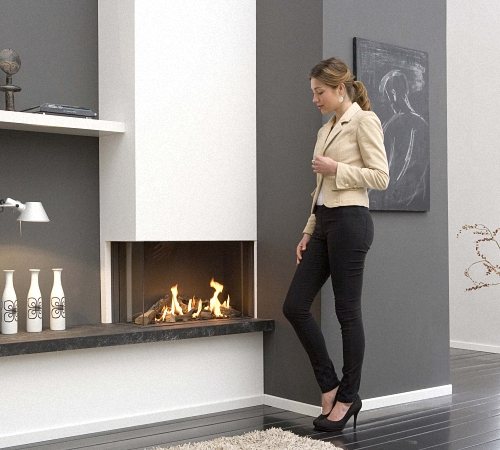
On the other hand, holes are placed through which air enters.
To construct the body of the gas burner, porous ceramics are used, which evenly distributes the gas supply and forms a flame strip.
Gas burners come in two types:
- with manual control,
- with automatic control.
The gas fireplace consists of:
- a firebox that has narrowed sides, thus ensuring improved heat transfer, the firebox can be: cast iron, glass or steel, the main requirement for the firebox is high heat resistance;
- a smoke collector, which is characterized by the presence of an inverted funnel shape, collects gas combustion products and discharges them into the chimney; the smoke collector is located directly above the firebox;
- chimney - the main feature of which is tightness, the chimney is responsible for the draft to remove gas combustion products, so the chimney must be moisture-resistant and heat-resistant; the chimney of a gas fireplace consists of two walls, between which a heat-insulating material is located. The minimum chimney size is 15 cm;
- portal - the external design of the fireplace, the design of which should harmoniously fit into the overall interior; another function of the portal is heat removal and protection from open flames.
Gas fireplace photo:
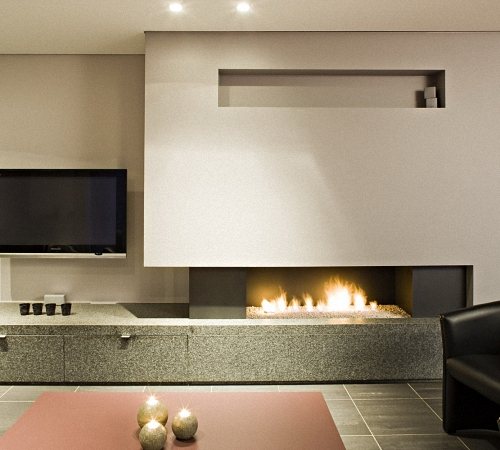
Benefits of using a gas fireplace
1. Easy to install - to install a gas fireplace, you just need to follow certain instructions specified in the technical specifications of the fireplace.
2. Gas fireplaces have high heat transfer and, accordingly, high efficiency.
3. A gas fireplace is lightweight, so it does not burden the living space.
4. A gas burner perfectly imitates a flame, thanks to which the fireplace brings warmth and comfort to the interior.
5. The ability to adjust the power of a gas fireplace is another advantage of this device.
6. Gas fireplace elements are made from fireproof materials that are resistant to fire.
7. A large number of varieties of gas fireplaces allows you to choose a fireplace depending on the individual characteristics of the interior.
8. A gas fireplace does not require a lot of time to kindle and heat up; after lighting the fireplace, it is enough to wait a few minutes to receive heat.
9. A gas fireplace in an apartment does not require solid fuel such as coal or wood, and does not require storage space.
10. Gas fireplace - easy to use and maintain, no need to clean the firebox from ash.
11. To install a gas fireplace, a chimney is not required; it is enough to make an outlet through which the gas air will escape.
12. Gas fireplace is an excellent solution for apartment owners with central gas heating; installing a gas fireplace allows you not only to get a beautiful thing in your interior design, but also to purchase an excellent heating device.
13. If we compare a gas fireplace for a home with a wood fireplace, the first option is more environmentally friendly, as it does not emit a large amount of harmful substances into the air.
14. A gas fireplace can operate without outside intervention for a long time.
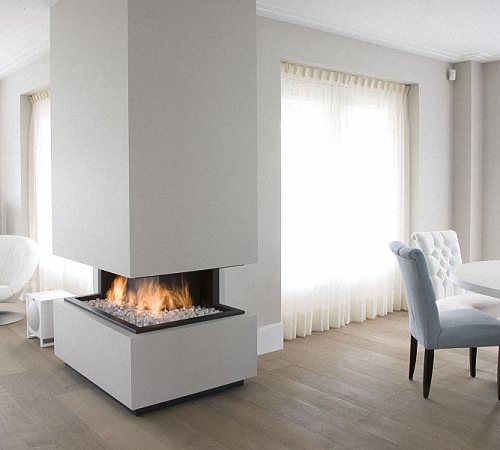
Gas fireplace - place in the interior
When using a gas fireplace with an open firebox, such a fireplace must not be located in a place where there is exposure to air currents. Since drafts affect the burner and gas combustion is disrupted.
Gas fireplaces are an excellent solution for both residential and public spaces.
Scope of use of gas fireplaces:
- apartments,
- private houses,
- dachas,
- restaurants,
- offices,
- hotels,
- hotels.
The best option for installing a gas fireplace is in rooms that have a centralized gas supply.
The variety of shapes of gas fireplaces, from ordinary rectangular to extraordinary pyramidal or round, allows you to choose a fireplace in accordance with the size of the room and the appropriate cost.
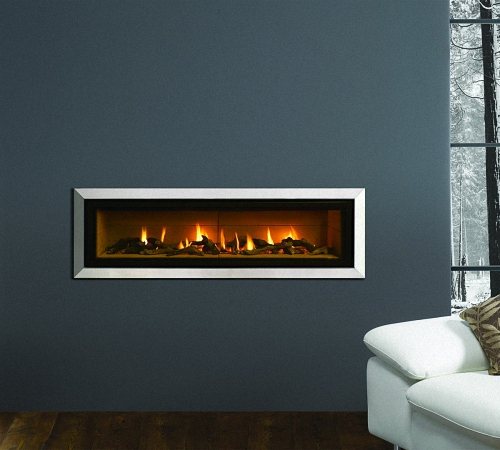
Types of gas fireplaces
Depending on the installation location, gas fireplaces are divided into:
- corner - installed directly in the corner of the room;
- built-in - installed in a wall niche;
- wall-mounted - attached to the wall;
- frontal - installed in the central part of the room.
In relation to transportation, gas fireplaces are distinguished:
- stationary type,
- portable gas fireplace.
Depending on the power, fireplaces are divided into:
- high power,
- medium-power,
- low power.
According to the type of fuel, gas fireplaces are distinguished, which operate on:
- propane-butane,
- natural gas.
Based on the appearance of the fuel hole, gas fireplaces are divided into:
- with an open firebox - with the ability to observe the flame, the efficiency of such a fireplace does not exceed 16%;
- with a closed firebox - such fireplaces have a special glass door that can sometimes be opened; if the door is closed, the efficiency is 70-80%.
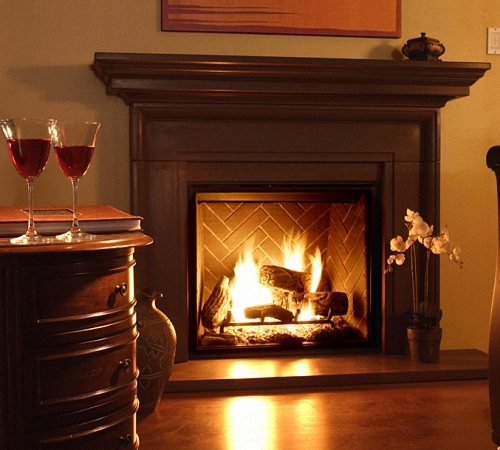
In relation to heat radiation, the following are distinguished:
- single-sided gas fireplace - a more common version of fireplaces, characterized by a high level of heat transfer;
- double-sided gas fireplaces are less popular, they are distinguished by their beautiful appearance and unusualness; such fireplaces need a lot of fresh air;
- gas fireplaces with three-sided radiation are characterized by unusual beauty, but have low heat output and are used to perform a decorative function.
Depending on the shape and functional features, gas fireplaces are divided into:
- gas stoves fireplaces,
- gas boilers, fireplaces,
- gas fireplaces convectors,
- gas infrared fireplaces.
Gas stoves and fireplaces serve to perform heating functions. Advantages:
- room decoration,
- heating reliability,
- high level of heat transfer.
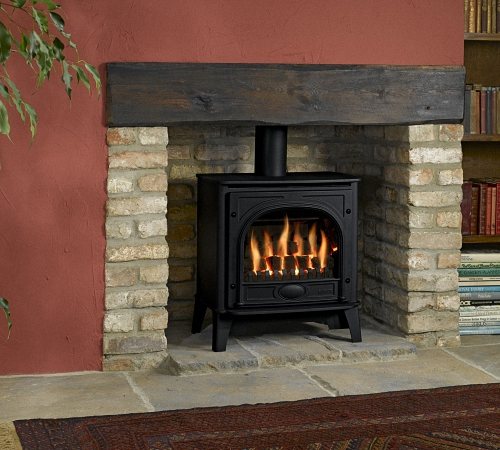
Fireplace stoves are made from cast iron or steel. The inner surface is laid out using heat-resistant bricks. Heat-resistant glass is used to make doors.
Fireplace stoves are characterized by 50% efficiency. The flame strength can be adjusted.
A gas boiler fireplace is a device that is responsible for heating the room, but at the same time is equipped with a portal and looks like a gas fireplace. A gas boiler fireplace makes it possible to regulate the temperature in the room.
A gas fireplace convector is a gas heater that looks like a fireplace. The front door of the convector is made of heat-resistant glass.
Advantages:
- beautiful appearance,
- silent operation,
- quick heating of the room,
- fire safety,
- a small amount of combustion products.
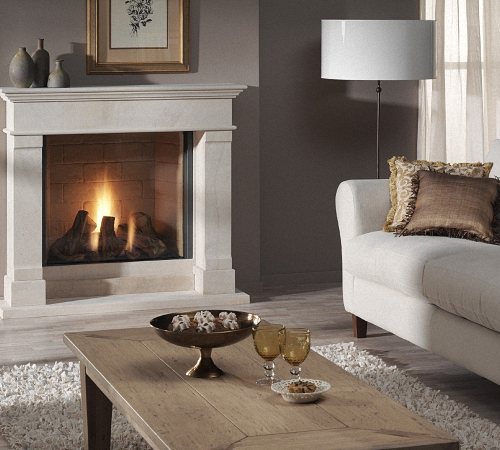
The gas infrared fireplace is one of the most popular gas fireplaces. The device operates on a butane-propane basis. They are used for heating both residential and industrial premises or outdoors. The room is heated by infrared waves and direct heating of the ceramic panel. The fireplace does not require large installation costs and quickly fills the room with warmth and comfort. An infrared gas fireplace does not require a chimney or ash removal. It is safe and has the ability to adjust the temperature. Infrared gas fireplaces should be installed away from flammable objects.
Recommendations for choosing a gas fireplace
1. For a house or apartment, it is better to choose a standard gas fireplace.
2. At the dacha, it is appropriate to install a gas fireplace stove, due to the possibility of quickly warming up the room.
3. The design of the fireplace should be in harmony with the overall interior of the room.
4. For a classic style, use a rectangular corner fireplace.
5. For a modern design style, it is better to choose a fireplace with an unusual shape and non-standard colors.
6. Fireplaces with two or three-sided radiation are not capable of heating a room, but are just a decorative element.
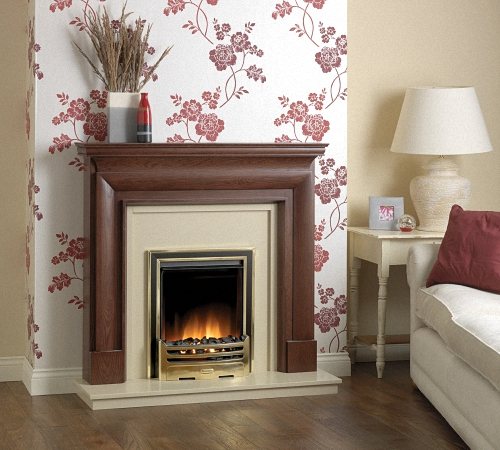
7. When choosing a fireplace, pay attention to the presence of a thermostat and built-in electrical appliances.
8. Be sure to compare the power of the room with the power of the fireplace, since a fireplace of medium or low power is not capable of heating a large room.
9. To buy a gas fireplace, contact specialized stores or construction supermarkets, where specialized specialists will help you choose a fireplace according to your individual needs.
10. When purchasing a gas fireplace and installation equipment, request certificates of compliance with all standards and a warranty from the manufacturer.
11. The price of a gas fireplace depends on the following factors:
- portal design,
- fireplace power,
- the material from which the burner is made,
- fireplace manufacturer,
- type of fireplace.
Installing a gas fireplace: requirements for pipes, equipment and chimney
1. When laying a gas pipe, the pipe must not be hidden in the walls; the pipe must only pass along the surface.
2. Check that the pipes are connected correctly to avoid gas leakage.
3. The room in which the fireplace is planned to be installed must be well ventilated.
4. The firebox must not be placed in an open draft.
5. When using a fireplace with an open firebox, flammable objects should be located away from the fireplace.
6. To install a fireplace, you need to arrange a smoke duct.
7. For an island-type fireplace, a chimney is required.
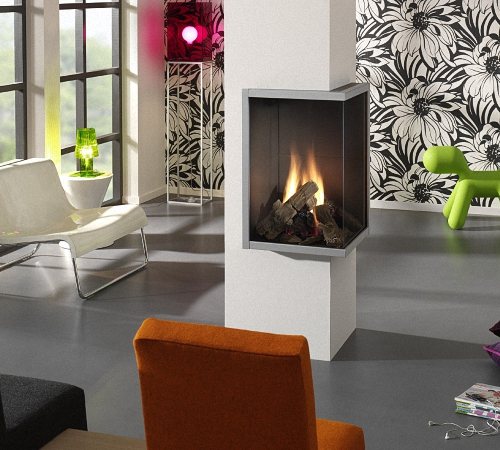
8. To ensure electrical thermoregulation and automatic switching on and off of the fireplace, electricity should be provided to the location of the fireplace.
9. During combustion of gas, water and carbon dioxide are released, so the chimney must be moisture resistant.
10. The best option for a chimney would be to install a stainless steel pipe, which is wrapped in heat-insulating, non-combustible material.
11. The following materials can be used to decorate the fireplace:
- a natural stone,
- fake diamond,
- brick,
- ceramic tile.
Gas fireplace as a heating device
Gas fireplaces for the home not only decorate the home, but also provide heating. True, you need to understand that fireplaces are not able to compete with gas heating boilers either in terms of productivity or efficiency. In addition, water heating is much more comfortable than air heating. For a small dacha, where in winter the owners appear only on short visits, a fireplace can serve as the main source of heat, and for a residential building and apartment in our climate - only an additional one. If the main heating equipment fails, the fireplace will help keep the house warm during repair work.
The fireplace burner can be powered by both natural gas and liquefied gas. When connecting the burner to liquefied gas, in addition to cylinders or a gas holder, you will need additional equipment, including a reducer. It should be taken into account that a gas fireplace with a cylinder is quite voracious, for example, with a burner power of 8 kW at maximum mode, a 50-liter cylinder will last no more than 25-30 hours of operation.
What's inside: a gas fireplace
Gas fireplaces can be purchased in five formats:
- A fireplace burner is a device that resembles a portable gas stove in design, only the flame does not burn in a circle, but is elongated in a line. It does not have an external firebox and, as a rule, imitates the grate of a wood-burning fireplace. Inexpensive burners have low power, up to 3.5 kW, which makes it possible not to equip the fireplace with a chimney. More productive models are also produced, equipped with various levels of automation, which affects their price and leads to the need to install a chimney.
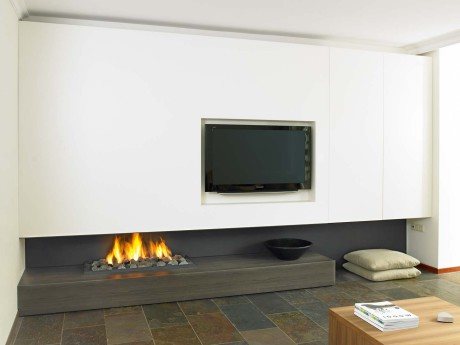
The fireplace burner can be installed anywhere, providing gas supply and smoke removal.
- A gas firebox with a glass door is very similar in appearance to a wood firebox, and structurally it is not very different. The burner is located at the bottom, most models have a power of 7-9 kW, but 10.5-12 are not uncommon. This is already enough to heat a dacha with an area of 75-120 m2. And if the house is well insulated, it will be much larger.
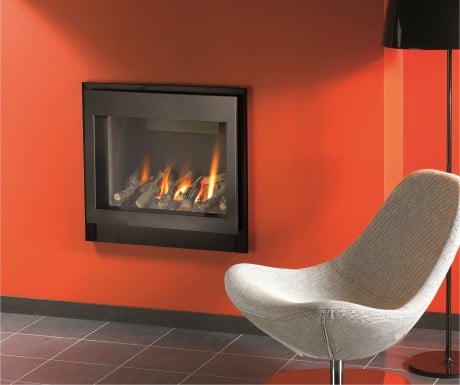
A relatively inexpensive medium-power gas firebox can heat a small cottage or guest house
Fireboxes must be equipped with separate chimneys in compliance with all fire safety standards. The temperature inside a gas firebox is lower than in a wood firebox; it does not rise above 650 ºС, so lining a steel body is not necessary, but in some models ceramic lining is installed, which can look very decorative.
There is an internal lining made of stainless steel; in addition to thermal protection, it plays the role of an infrared radiation reflector, increasing the efficiency of the fireplace. Most models are equipped with automatic equipment: piezo ignition, gas control, which stops the fuel supply when the fire dies out, abnormal gas pressure, lack of draft and unsafe levels of carbon monoxide in the room. A fan that increases and accelerates heat transfer, a remote thermostat and a servo drive for controlling the burner with automatic maintenance of the set temperature, a timer or programmer, and a remote control are among the additional options for mid-price fireboxes or standard equipment on expensive models.
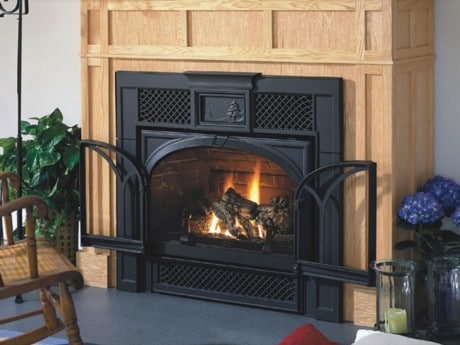
Gas firebox can be designed in classic Victorian style
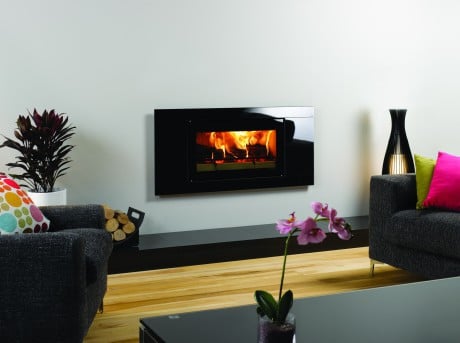
Cutting-edge modern minimalist looks great too.
The lining or portal for the fireplace can be purchased ready-made or made independently along with the box. The requirements for it are the same as when installing a wood-burning firebox: thermal protection of the wall, ceiling and preferably the entire casing, the presence of ventilation holes in the lower and upper parts of the box.
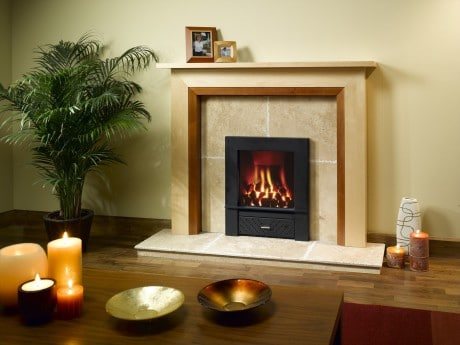
Many gas firebox models integrate with standard factory surrounds. However, such a portal is not difficult to make yourself
- An open gas firebox is a fairly high-power burner, integrated into the firebox without a door, functionally similar to a closed one.
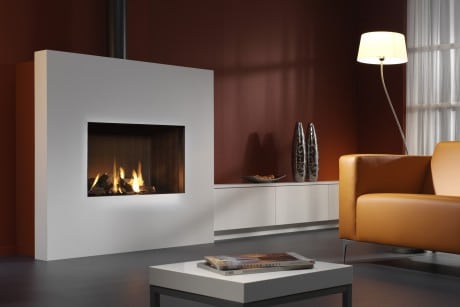
The open firebox will appeal to lovers of live flames
In good models, the filling covering the burner can be selected
- A gas fireplace stove is externally indistinguishable from a wood-burning fireplace stove.
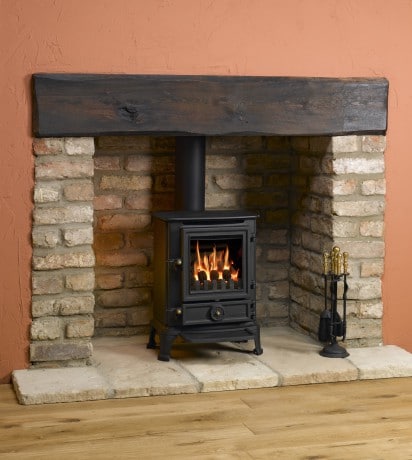
Such a gas fireplace can be installed in a niche, the main thing is to ensure smoke removal. The filling masking the burner in the fireplace in the photo imitates coal, which is traditional in Britain
- Designer gas fireplaces, including many open ones, placed in the middle of the room or against one of the walls, are supplied fully equipped: the burner, firebox and cladding form a single ensemble.
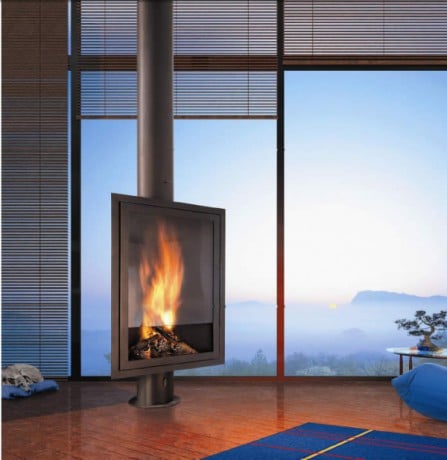
Designer gas fireplaces are insanely beautiful and just as expensive
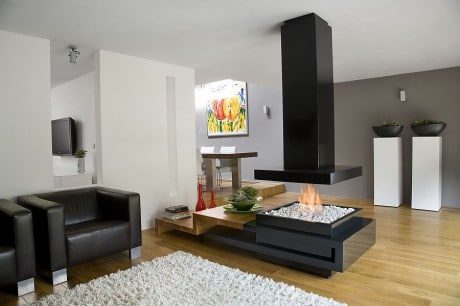
An elite open fireplace located in the center of the room is beautiful, but it is not easy to install a gas pipeline to it unnoticed
Gas fireplace: a new generation hearth
Gas fireplaces are an excellent alternative to wood heating appliances. Owners of such fireplaces can easily enjoy the play of live fire, using the most economical type of fuel - methane or liquefied propane-butane. In terms of its aesthetic characteristics, a gas fireplace, as many believe, is in no way inferior to a wood-burning fireplace, and in some operational parameters it sometimes surpasses it.
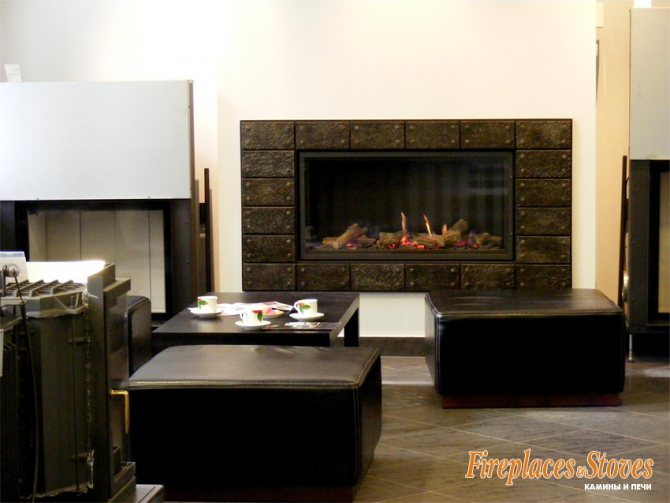
The range of gas fireplaces offered by the modern market is quite wide. Among the huge variety of models of various sizes, styles and colors, everyone can find a fireplace to suit their taste, for their interior. Fireboxes and linings for gas fireplaces have a very diverse design; their configuration can be any: rectangular, spherical, pyramidal, teardrop-shaped... By the way, unlike a solid fuel fireplace, a gas fireplace can also be mobile, which is very convenient when you need to quickly heat different rooms of the house . And this is just one of the advantages of gas fireplaces over wood fireplaces.
INSTEAD OF FIREWOOD
The fuel for gas fireplaces, as you might guess, is natural gas and liquefied propane-butane. Such a fireplace can be installed in any room where there is a gas supply, or simply connected to an autonomous gas cylinder. Fireplaces running on natural gas are marked “N” (“Natural”), and those running on liquefied propane-butane are marked “P” (“Propan”). By the way, you should keep in mind that a fireplace designed to operate on natural gas cannot be operated on liquefied gas, so you should decide on the type of fuel before purchasing the device. The decorative effect of burning logs and hot coals, for which a classic wood-burning fireplace is often built, is achieved in gas fireplaces through special fireproof accessories that imitate firewood, coals and even ash (which does not need to be constantly raked out - and this is another advantage). The living flame of a gas burner, enveloping such a dummy, creates the complete impression of a genuine wood-burning fireplace. The illusion of a living flame covered by a glass screen is so great that an inexperienced viewer may not be able to distinguish a built-in gas fireplace from a classic wood fireplace by its appearance.
LIVING FLAME FOR ONE OR TWO
And one more undeniable advantage: while lighting a wood-burning fireplace can be not so easy, turning on a gas fireplace is as easy as a gas stove. This is done literally with one click using a piezo lighter built into the gas supply system. The device that supports combustion in a gas fireplace is an atmospheric gas burner equipped with an automatic control system. The automatic control system maintains constant gas pressure in the burner. As a rule, gas fireplaces have a remote control, which makes their operation incredibly simple and convenient for those who do not want to get up from the couch. Many models of domestic and imported gas fireplaces are equipped with a thermostat that maintains the set temperature in the room. For a gas fireplace that does not have its own thermostat, you can connect an external room thermostat.
SECURITY AT THE LEVEL
Modern gas fireplaces are truly safe: they are necessarily equipped with tip-over sensors and a special air analyzer, which shuts off the flow of gas to the burner if the content of carbon monoxide in the air exceeds the permissible limit. Special devices, as we have already noted, maintain constant gas pressure in the burner, and also allow you to regulate fuel consumption in the fireplace and provide control over the continuous supply of gas to the burner; if the flame goes out, the gas supply automatically stops.
FOR A BIG HOUSE
The power of gas fireplaces is quite high - it reaches 10 kW, that is, a gas fireplace can heat a room with a volume of up to 200 m3. In order to correctly calculate the required size of the fireplace, you should seek the help of a professional who will make an accurate calculation of the heat loss of the house, taking into account the volume of the room to be heated, the presence and quality of insulation, the size of the windows, as well as other energy characteristics of the house.
INSTALLATION
In a city apartment, installing a liquefied gas fireplace will inevitably be accompanied by difficulties, sometimes significant ones. You will need mandatory permission from gas service specialists and, most likely, work to move gas pipes, since in most apartments gas is piped only to the kitchen. But no difficulties will stop real lovers of improving the interior of their home. When installing a gas fireplace in your home, you must follow certain rules, because this is serious heating equipment that can be dangerous if installed incorrectly. Without exception, all gas fireplaces (both mobile and stationary) must have an appropriate certificate and operating instructions with a list of technical requirements stipulating the specifics of connecting the unit to the gas main. Only gas specialists should lay the internal gas pipeline and install the fireplace. As a rule, most stores selling fireplaces have an equipment installation specialist on staff. Otherwise, you can always find a company that specializes in installing fireplaces (just remember to make sure that this company has the appropriate license to install this type of equipment). Installation of a gas heater usually includes, as we have already noted, work on laying a gas pipeline and moving gas pipes, a chimney and the fireplace itself, as well as laying electrical wiring for a fan and thermostat. The room where a gas fireplace is to be installed must be well ventilated. We should also not forget that the fireplace should be installed at some distance from other objects that could ignite from its flame. The minimum permissible distance to other objects is often indicated in the instructions for using the fireplace; if such data is not available, the installation specialist will be able to calculate this distance himself.
CHANGE WOOD-MOUNTED TO GAS
By the way, if you want to replace a wood-burning fireplace with a gas one, it will be useful for you to know that separate decorative burners are also produced that run on propane-butane, which are inserted into the niche of a regular wood-burning fireplace. The burner is placed quite deep in the combustion chamber, and all combustion products exit into the chimney. For those who are tired of lighting damp wood for hours and watching the flame, this is the most suitable option.
FINALLY
Modern gas fireplaces are a real godsend for those who do not want to waste time lighting logs and maintaining a flame in the firebox, extinguishing coals and cleaning the chimney. For those who value practicality and convenience, but do not want to give up the beauty of dancing flames. The atmosphere of a home is now turned on with one click of a piezo lighter. Technological, environmentally friendly, and economical, a gas fireplace can rightfully be called a new generation fireplace and is fully suitable for people seeking to combine coziness and maximum comfort in the interior of their home or apartment.
Expert commentary
Sergey Olegovich Klimatsky, director of GEFEST GROUP (St. Petersburg) I myself have been using a gas fireplace installed in a city apartment for several years. Gas fireplaces have a number of undeniable advantages: in addition to convenience and cleanliness, they do not require a chimney that goes to the roof - the pipe can be installed on the facade of the building without any damage, which allows the use of gas fireplaces on any floor of a multi-story building. The capacity of a small gas cylinder is enough for several months, and the remote control allows you to light a live fire in the fireplace with one click. Source: Fireplaces&Stoves magazine No. 3 (03)
Fireplaces with coaxial chimney
There are a number of models that have a coaxial chimney, like turbocharged heating boilers. This gives three serious advantages: oxygen is not consumed from the room; the pipe can be routed not only vertically to the roof, but also horizontally into the wall; There is no need for ventilation in the room. True, the Ministry of Emergency Situations employees do not always agree with the latter. Not all double flue gas fireplaces, like boilers, require a fan to create the necessary airflow. Thanks to a precisely calculated scheme, combustion products move in them naturally. True, there are restrictions on the maximum length of the gas duct, which, however, are removed when installing a fan.
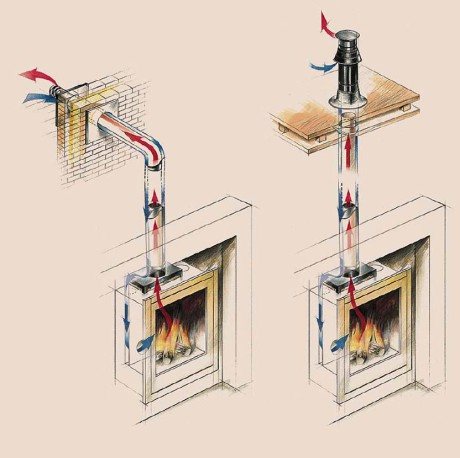
The coaxial chimney of a Faber gas fireplace with a multi-ventilation system can be routed either to the roof or to the wall. Without fan, maximum vertical length is 12 m, horizontal length is 6 m
Only certain models of closed fireboxes can be equipped with a coaxial chimney; none of them are very large or very elongated. Fireplaces with coaxial flue are produced only by reputable companies and they are more expensive than usual.
How much does a blue light cost: the asking price
The cost of natural gas in Russia and the CIS countries is low. A fireplace with a power of 8 kW, which can heat 150 m3 (about 50 m2), at maximum mode consumes approximately 1 m3 per hour. The cost of heating using a gas burner in the central regions of the Russian Federation will be even slightly lower than the cost of purchasing firewood. This is, of course, if you buy firewood officially from the forestry department, and not cut it on the sly outside the outskirts. But, we repeat, a gas boiler is more economical. Heating with bottled gas will be noticeably more expensive, every 6-8 times, the consumption for the mentioned 8 kW fireplace is 0.75 kg/hour.
The fireplaces themselves cost very differently. A simple 3 kW burner without any automation can be bought for 250-300 usd. A full-functional mid-level fireplace insert of 6-10 kW, similar to a real wood-burning one, with a fairly “natural”-looking flame, automatic ignition, safety control and a fan - for 1500-3000 usd. Designer models start at 5,000 usd; luxury products are prohibitively expensive.
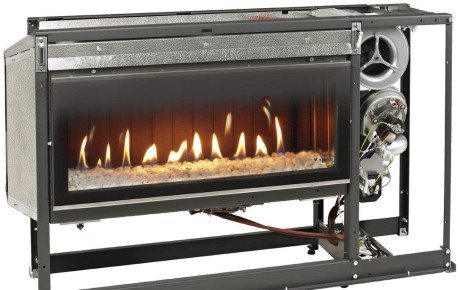
The Milano 130 gas firebox is more than 2 meters wide, equipped with a fan, all imaginable automation, including the possibility of remote control and integration into the smart home system. The opportunity to light a fireplace in a house on Rublevskoe Highway while sunbathing on a Bahamian beach costs money - the firebox is not cheap
Cladding a fireplace is a separate topic and separate money; you can do it yourself or buy a ready-made one. Some models are identical in size to wood-burning fireboxes and can be built into universal factory cladding and portals; for others (usually designer ones), individual frames are produced.
In general, the cost of gas fireplaces is comparable to the price of steel and cast iron wood burning fireboxes of similar power and design; operating costs also differ little.
How to obtain permission and install a gas fireplace in a house or apartment
There are no uniform, clearly defined installation rules for gas fireplaces either in the Russian Federation or in the CIS countries, so “firefighters” and “gas workers” are forced to focus on the general requirements for gas equipment, standard fire safety rules, manufacturer’s recommendations and local regulations, if any. In any case, you will have to order a project, obtain permission and ensure compliance with the following requirements:
- Gas equipment must not be placed in living rooms. That is, if the technical passport indicates “bedroom”, they will not be allowed to install a fireplace there. Most likely, they won’t be allowed in the “living room” either. In the “kitchen”, “dining room”, “office”, “rest room” - please.
- Walls, ceilings and floors made of combustible materials must be protected from high temperatures in accordance with fire regulations.
- For fireplaces with a power over 3.5 kW (which is almost all fireboxes and some burners) a separate chimney will be required. Its cross-section must be no lower than that specified in the technical passport, and the material from which the pipe is made must be heat- and acid-resistant. Ceramic, stainless or enameled steel are suitable.
- The room where gas equipment is installed must be equipped with natural exhaust. It should be borne in mind that when gas burns, a lot of oxygen is consumed, so it is necessary to ensure an influx of fresh air.
- We are only allowed to lay gas pipes openly; you will have to be smart when decorating the interior so that the communications are not conspicuous.
Gas fireplace insert
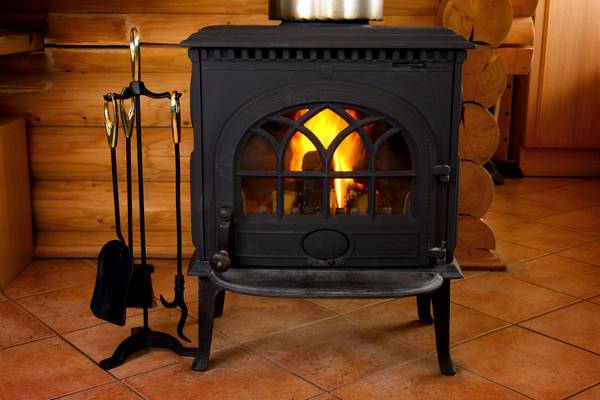
Cast iron fireboxes are the most durable, as they are not exposed to acids when dissolving soot
The shape of the firebox is important for choosing the location of the device. She may be:
- frontal, if the device is mounted against a wall;
- corner;
- double-sided viewing for island appliances.
During the combustion of gas, a compound of carbon dioxide with water vapor and sulfur is formed. Condensation with an acidic PH factor forms in the chimney pipe. Therefore, it is impossible for the firebox to be made of ordinary steel, otherwise it will corrode and quickly collapse. The most reliable fireboxes are cast iron or stainless steel.
Where you can't install a gas fireplace
It is not difficult and inexpensive to meet all the necessary conditions for installing a gas fireplace in a private home, especially if you take care of this at the construction stage. To install a fireplace in a city apartment, you must, at a minimum, have a gas pipeline. Alas, in the city, more and more apartments are being built with electric stoves (houses over 12 floors are not gasified at all), and they will not be allowed to install a gas fireplace in a gas-cylinder apartment building. In addition to the natural gas pipeline, it must be technically possible to install a separate chimney. Unused duct can be found in older homes that once had stove heating. Very few new buildings have a "spare" chimney duct. If the apartment is located on the top floor of a standard house, it is technically possible to bring the chimney to the roof.
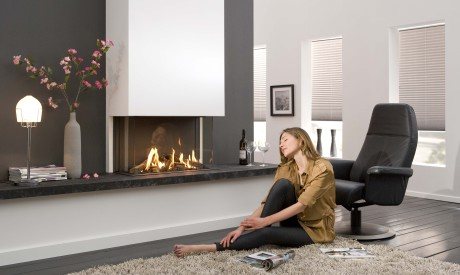
For owners of gas-fired penthouses there are no problems in obtaining permission to install a gas fireplace
If the apartment is not located on the top floor and there is no free ventilation shaft, the available options are a burner up to 3.5 kW (a chimney is not needed, but natural ventilation is required) or a relatively expensive fireplace with a coaxial chimney and the possibility of venting it into the wall.
Installing a gas fireplace with your own hands, bypassing the official procedure, means, at a minimum, running the risk of receiving a serious fine and being disconnected from the centralized gas supply, if available. The worst option is that we have all seen on TV more than once what happens when safety precautions are violated when operating gas equipment. All design and installation work regarding gas supply must be carried out exclusively by licensed organizations and experienced specialists with the appropriate permits, in strict accordance with existing standards and subject to the availability of the necessary permits and approvals.
Poor traction level
You can check the draft level in the chimney by holding lit paper, newspaper or a match to the inspection window. You should observe the behavior of the flame - if it deviates to the side and into the chimney, then everything is fine with the draft. Draft problems exist if the flame does not move. Then it is necessary to carry out actions to clean the smoke channel with the involvement of a specialist.
